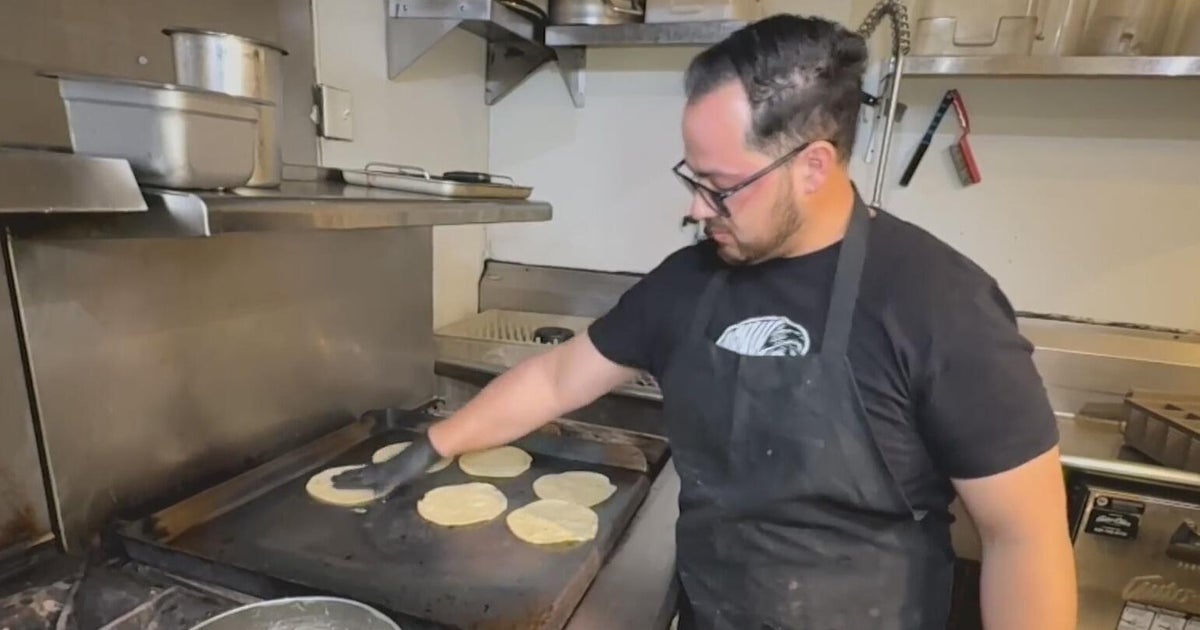Mars Rover Curiosity Ordered To Drive In Reverse To Spare Damaged Wheels
SAN FRANCISCO (KCBS) -- When NASA's Mars rover Curiosity set off last summer on a six-mile trip to Mount Sharp mission officials thought it might take a year to get there. Now, nearly a year into the journey, the rover has only made it about half-way.
It turns out the wheels and tires on the rover have sustained serious damage beyond the normal wear-and-tear scientists had anticipated.
On Sunday, KCBS' Susan Kennedy spoke with Dr. Ashwin R. Vasavada, deputy project scientist on the Curiosity mission. Here is an edited transcript of their conversation.
Susan Kennedy, KCBS Radio: What has gone wrong?
Dr. Ashwin Vasavada: Y'know, we've had a spectacular first year on Mars but we have been a little slow because we've been noticing a little bit more punctures and tears in the aluminum wheels -- that the rover has -- than we expected. We're driving over very rugged terrain and we expected some damage but we got a little alarmed at the rate at which the holes were appearing.
Kennedy: I guess you can't exactly call AAA, can you?
Dr. Vasavada: [laughing] No, I really wish we had some spares and, maybe a tow truck. Actually the rover is fine. It's perfectly capable of driving everywhere we want it to go right now. We were just kind've looking ahead and -- if the rate of damage had kept on as what we were seeing -- we would have been in trouble. Instead we were able to find safer routes, driving more in sandy terrain, avoiding the kind of sharper rocks that were causing the damage.
Kennedy: I understand you're doing that by driving it in reverse?
Dr. Vasavada: Yeah. Sometimes the best thing to do is to drive the rover in reverse. It puts a little less pressure on some of the more damaged wheels, when you drive it that way. So we'll do whatever it takes. The rover does exactly what we ask of it. So we can't ask for more than that.
Kennedy: That's gotta be a little awkward, trying to drive this thing in reverse and also see where it's going. Aren't the cameras in the front?
Dr. Vasavada: It's true. One thing that helps is that we do a lot of the task planning from earth. We have rover drivers here, wearing some 3-D goggles, who look at the latest images and plan almost the entire route before we send the commands up to Mars. So the rover doesn't have to do a whole lot of looking with its own eyes. We can drive it automatically too but, to be a little safer, we've been driving it manually for most of the time.
Kennedy: What kind of things have you discovered so far?
Dr. Vasavada: It's been a great year. On Tuesday, we celebrate our first "Mars year on Mars" -- 687 earth days is one Mars year. The wheel issue slowed us down somewhat but even more so we just took our time on the plains next to Mount Sharp because we found an incredibly interesting place, where water flowed for, probably, millions of years in streams and lakes. We've just been havin' a ball looking at all those environments preserved for us, probably two or three billion years later, that record this very earth-like place.
Kennedy: It's a six-mile journey that's taking a little over a year, so far. Are you still hopeful that Curiosity can get to the top of Mount Sharp?
Dr. Vasavada: We're planning to get to the foothills. Now that we've recovered from this wheel issue and have really set our focus on getting to Mount Sharp, we hope to get there later this year, sometime. We'll be exploring mostly in the foothills where we see more evidence of water and minerals that form in water from early in Mars' history. We have no plans, actually to summit. That would be very difficult and, actually, the upper half of the mountain is pretty uninteresting. All the action is kinda in the lower foothills where the water flowed.
Kennedy: Once it gets there, what will it be doing?
Dr. Vasavada: We'll be zigzagging around these different foothill mountains and gorges where we see clay minerals that require water to form; and sulphate minerals that also required water. The interesting thing there is the clays formed at one point and then the sulphates formed and that tells us that the mountain itself has witnessed a dramatic climate change -- going from a warm, wet Mars to a cold, dry Mars today.
Kennedy: How exciting is this stuff for you?
Dr. Vasavada: I love it, it's great. Not only is it fun just to drive a rover around another planet but it's pretty awe-inspiring to understand that Mars was so similar to earth. So many of the pictures we get back you just think you're in the Mojave desert. It really is fascinating.



